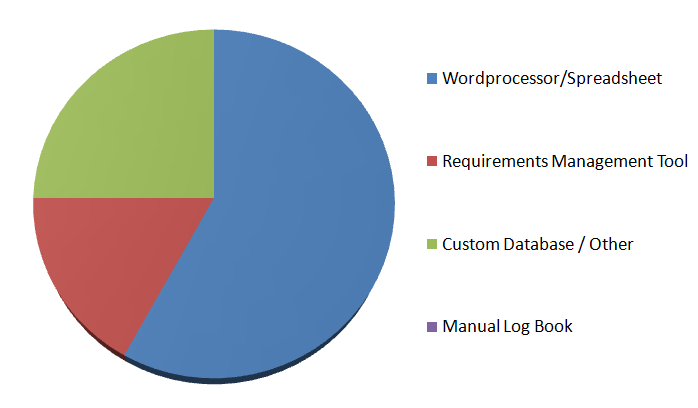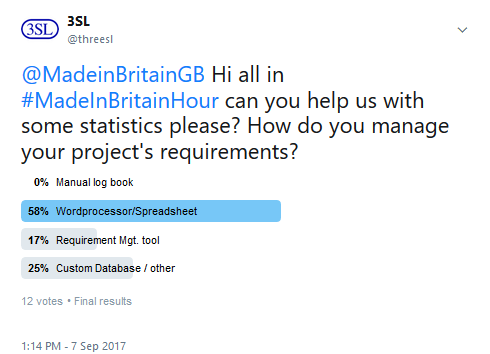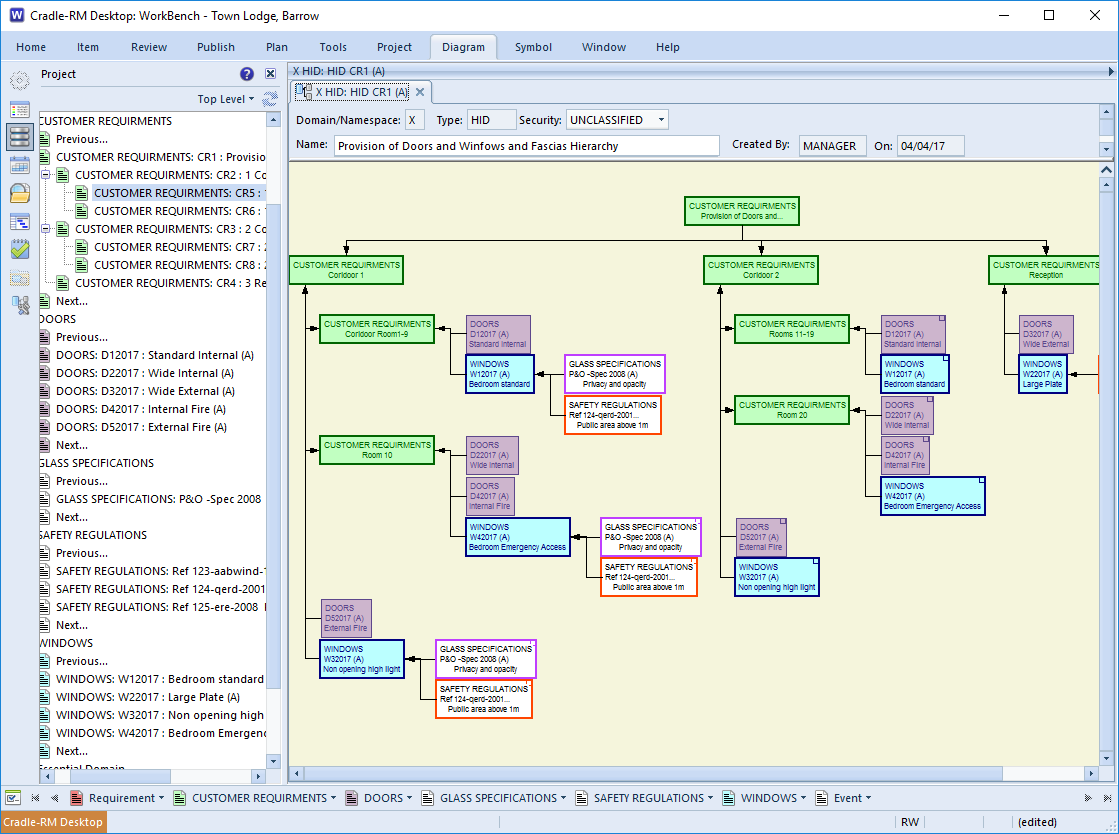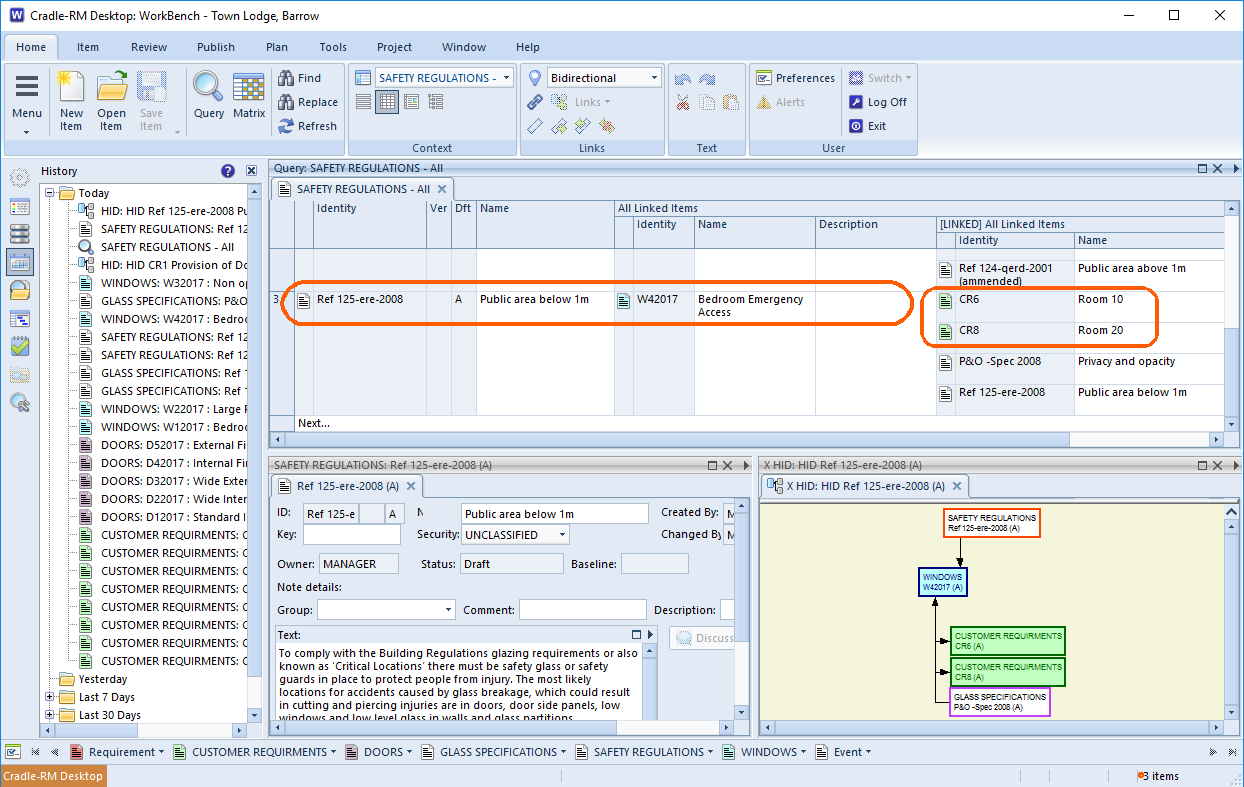58% of Projects are at Risk due to Poor Requirements Management Tool Selection.

Over half of projects are using spreadsheets and word processing documents to manage their requirements they are taking a large risk.

OK, so the tool poll was very small and not necessarily scientifically significant, but it does indicate that not everyone has seen the light. And it gives us some data to draw the nowadays ‘mandatory’ info graphic!
As a young student, I remember being introduced to ‘Office‘ applications on a special ‘visit’ to a college. We were shown a spreadsheet and a word-processor. During the hands on task we were all asked to write something. A fellow student completed their piece but couldn’t understand why their work preview looked different to everyone else’s. Whilst all the words were there they were spaced in an odd manner. They’d used the spreadsheet, and entered a word in each cell and changed the columns until the text fitted. Whilst this is laughable now, the fact is the tool still allowed the job to be completed, still allowed the brief to be met. However, the result, using the wrong tool, was not as useful. Imagine trying to cut and paste a sentence into the middle of an existing clause….
A requirements management tool is adapted to aid the flow of requirement through design to testing and end of life. Items are linked in the project’s chain, unlike a design attribute in one document, vaguely referring to some version of a requirement in another.
Would we suggest a Requirements Management tool is needed for all projects?
NO! We wouldn’t, which may sound surprising from a tool vendor. If you make cupcakes and you get an order for 24 cakes 12 blueberry and 12 chocolate we would suggest a spreadsheet with a sheet of costings and a sheet of orders is probably enough, even a diary with the order written in the day before collection day would suffice. We really don’t want you to spend your money on an inappropriate tool. Spend it on some new icing nozzles and deliver us a batch of cakes. However, if you produce tens of thousands of cupcakes for a number of different vendors and have numerous suppliers, recipes and food standards to meet, well we could conceive of a Cupcake project as a set of Requirements and associated items that needed to be managed. Supplier X changes their ingredient, which products does this affect?
Away from food, before we all feel hungry, we can confidently say that YES the more complex your product, the more components, stakeholders, standards and tests you have to mange, the more important the right tool. The easier traceability becomes, the easier changes can be made and impact calculated. Don’t try laying bricks with a spade, just because you have one in the shed. Don’t try turning precision parts with a drill and a file just because it appears to work. Don’t try and write a novel in EMACS just because it is an extremely powerful text editor . DO use the right tools for the job,
Related Articles
Seeing the light, are you viewing your projects through rose coloured spectacles? Windows and Doors do they need RM (Requirements Management)?




